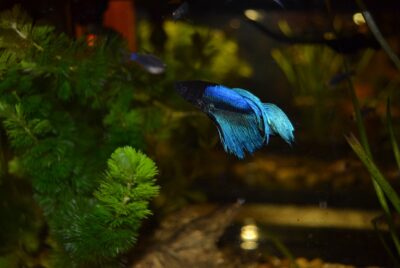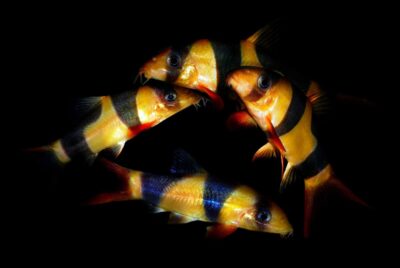Salt Water Plant Aquarium
A salt water plant aquarium can be a mesmerizing spectacle that brings the splendor of marine life right into your living room. The vibrant colors, exquisite textures, and the calming sway of aquatic plants create an underwater world of tranquility and beauty. However, setting up an awe-inspiring marine aquarium requires a fair bit of understanding, meticulous planning, and careful selection of the right plants and organisms. This guide aims to help you navigate the fascinating journey of creating your own saltwater plant aquarium.
The Importance of Plants in a Salt Water Aquarium
Plants play an integral role in maintaining a balanced ecosystem in your aquarium. They not only enhance the visual appeal but also contribute significantly to the health of the aquatic environment. That being said, fish also play a key role in maintaining a balanced ecosystem. You can learn more about them in our saltwater fish for your aquarium guide.
Plants as Algae Controllers
Algae are often the bane of any aquarium owner’s existence. These microorganisms can proliferate rapidly, blocking light and potentially affecting the health of your fish. However, macroalgae, or larger aquatic plants, can effectively combat this issue. They absorb nitrates – the nutrients that algae thrive on – thus out-competing the algae for food and causing them to starve and die off.
Plants as Nutrient Providers
In nature, fish feed on plants and the same holds true in an aquarium. Certain species of marine plants like Dragon’s Tongue Algae and Green Feather Algae serve double-duty as attractive additions to your aquarium and a source of sustenance for your fish.
Plants as Aesthetic Enhancements
The visual impact of a salt water plant aquarium is undoubtedly its most captivating feature. The myriad of colors, shapes, and sizes of marine plants can create a mesmerizing underwater tableau. Moreover, the strategic placement of these plants can add depth and structure to your aquarium, making it a living piece of art. To enhance this aesthetic, you might want to consider adding colorful saltwater aquarium fish to your aquatic setup.
Top Salt Water Plants for Your Aquarium
While there are numerous salt water plants to choose from, here are some of the most popular ones that combine beauty, utility, and ease of care.
Dragon’s Tongue Algae (Halymenia Dilatata) – (Salt Water Plant Aquarium)
This stunning macroalgae with its deep red hue can be the star attraction of your aquarium. Its fronds form a distinctive, shrub-like structure that sways gently with the water currents, creating a captivating underwater scene.
Green Finger Plant (Codium Spongiosum) – (Salt Water Plant Aquarium)
Resembling miniature deer antlers, the Green Finger Plant brings an interesting textural element to your aquarium. Its dense, finger-like projections rise from a central point, forming a lush, green canopy that not only looks beautiful but also provides excellent filtration and oxygenation.
Spaghetti Algae (Chaetomorpha linum) – (Salt Water Plant Aquarium)
Don’t let the name fool you – Spaghetti Algae is a super-plant when it comes to maintaining a healthy aquarium. It excels in absorbing nitrates and oxygenating the water, helping to balance the ammonia cycle in your tank. Its tangled, spaghetti-like strands form the perfect hiding place for smaller marine creatures.
Red Mangrove Propagule (Rhizophora Mangle) – (Salt Water Plant Aquarium)
The Red Mangrove Propagule is a unique addition to any salt water plant aquarium. It’s a tree-like plant whose leaves extend above the water’s surface, creating an intriguing multi-level landscape. The roots anchor themselves into the substrate, adding an element of verticality to your aquascape.
Red Gracilaria Algae – (Salt Water Plant Aquarium)
The Red Gracilaria Algae is a seaweed that makes a great addition to any marine tank. It’s not only visually appealing with its deep red color, but also serves as a nutrient-rich food source for your fish.
Halimeda – (Salt Water Plant Aquarium)
Halimeda is a unique, segmented plant that adds an interesting structural element to your aquarium. Its ability to absorb excess calcium makes it a great indicator of your aquarium’s health.
Turtle Grass Shoots (Thalassia Testudinum)
For a natural, seabed-like effect, Turtle Grass Shoots are a perfect choice. They require plenty of light and a moderate water flow, but the end result is a lush, green carpet that enhances the overall aesthetics of your aquarium.
Mermaid’s Fan (Halimeda Udotea)
This plant, with its large, fan-shaped leaf and bright green color, is a visual delight. It’s quite sensitive to high nitrate and phosphate levels, so regular monitoring of your water conditions is necessary to keep this plant thriving.
Tufted Joint Algae (Cymopolia Barbata)
The Tufted Joint Algae, with its tree-like growth and vivid green color, is a must-have addition to your saltwater aquarium. It’s a great source of natural food for larger herbivorous fish like tangs and angelfish.
Sea Lettuce (Ulva Lactuca)
Last but not least, the Sea Lettuce is a workhorse of a plant. It grows rapidly, absorbing nitrates and phosphates, and helps maintain a balanced, healthy environment in your aquarium.
Choosing the Right Plants for Your Salt Water Aquarium
Choosing the right plants for your salt water plant aquarium depends on several factors:
- Purpose of the plant: Do you want it for aesthetics, nutrient control, or as a food source for your fish?
- Tank conditions: What are the lighting, flow rate, and water parameters in your aquarium?
- Fish compatibility: Will your fish cohabit peacefully with the plants or will they nibble on them?
Beginner’s Guide to Salt Water Plant Aquarium Care
Here are some essential tips for beginners:
- Lighting: Most marine plants need ample light to grow. Make sure your aquarium is well-lit to meet their needs.
- Nutrient levels: Monitor the levels of nitrates, phosphates, and iron in your tank. These nutrients are essential for plant growth.
- Growth control: Some marine plants can grow rapidly and take over your tank. Regular trimming can help keep their growth in check.
Conclusion – (Salt Water Plant Aquarium)
Creating a saltwater plant aquarium is an enriching experience that combines the joy of aquascaping with the thrill of marine biology. With the right choice of plants and appropriate care, you can create a captivating underwater world that is both visually stunning and ecologically balanced. Your salt water plant aquarium can become a living testament to the beauty and diversity of marine life, providing endless hours of tranquility and enjoyment.
FAQs
Q: Are corals considered plants?
A: No, corals are not plants. They are marine invertebrates made up of thousands of tiny animals known as coral polyps.
Q: Are algae plants or protists?
A: Algae are plant-like protists. They have properties of both plants (like the presence of chlorophyll and the ability to photosynthesize) and protists (like the lack of roots, stems, and leaves).
Q: Can I put freshwater plants in a saltwater aquarium?
A: No, freshwater plants cannot survive in saltwater conditions. They are not adapted to handle the high salt concentration and will likely die.
Q: How do I attach plants to my aquarium?
A: Many marine plants can be attached to rocks or other surfaces using aquarium-safe glue or thread. Others prefer to float freely or root themselves into the substrate.
Q: What are some good fish for a planted salt water tank?
A: Fish such as the Yellow Tang, Clownfish, and Royal Gramma are excellent choices for a planted salt water tank. They are generally peaceful and won’t harm your plants.




